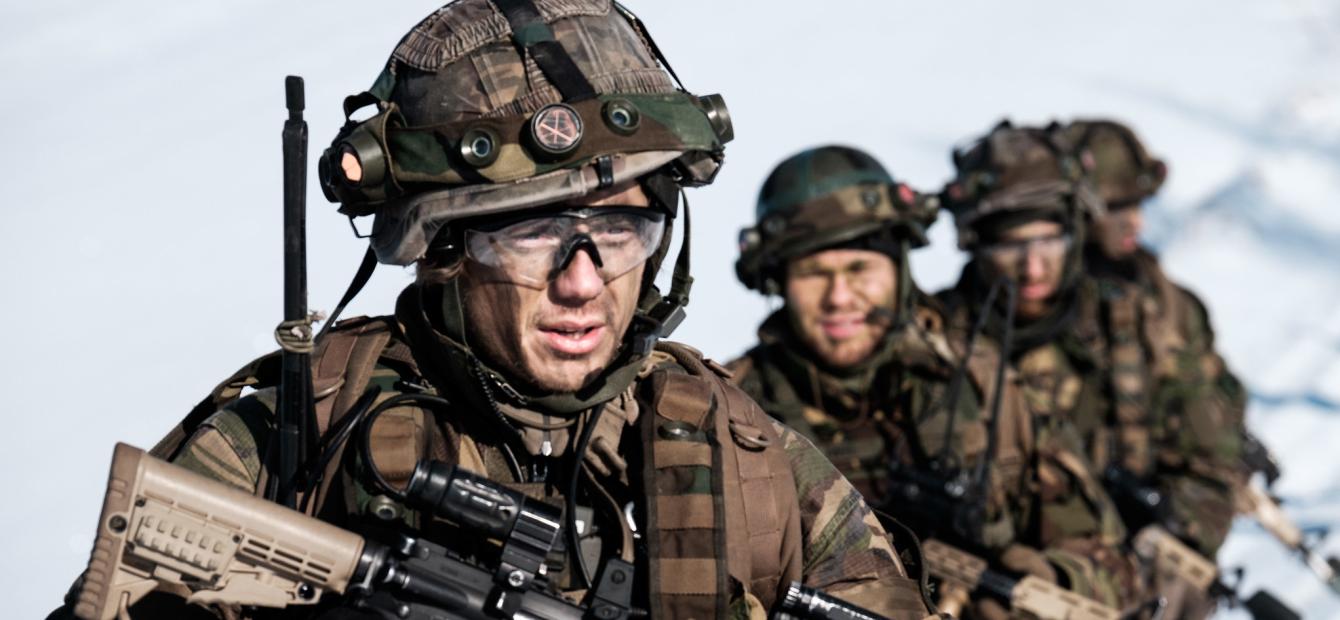
Who are willing to fight for their country, and why?
Why do some people say they are willing to fight for their country while others do not? Of course, answering this (survey) question is a far cry from anyone’s actual willingness to fight and to risk one’s life in battle, and often the true readiness of people to engage in combat remains unclear until a crisis erupts.1 Nevertheless, examining the responses to this question in times of peace remains a compelling proxy for understanding potential behaviours.
In pursuit of unravelling this enigma, an academic research project was initiated, funded by the Dutch Science Council (NWO), with the aim of understanding what drives individuals’ willingness to fight for their country.2 To carry out this research, data from large multinational quantitative surveys and individual focus groups conducted in the Netherlands were combined.
When surrounded by conflict, individuals might perceive war as a tragic yet inevitable aspect of the international order
The survey data originate from the World Values Survey and European Value Study (WVS/EVS), which have been ongoing research projects worldwide since 1981. These surveys include the question: “Of course, we all hope that there will not be another war, but if it were to come to that, would you be willing to fight for your country?” This question has been posed in over a hundred countries from 1981 to 2022, offering a distinctive perspective to explore the complexities of citizens’ stated willingness to fight.
Building upon previously examined factors, this latest study focuses on the impact of nearby conflicts on citizens’ willingness to fight. More specifically, the findings suggest that citizens adjust their fundamental beliefs about the role of war in the international system based on changing levels of conflict in their proximity. When surrounded by conflict, individuals might perceive war as a tragic yet inevitable aspect of the international order. Consequently, they are more likely to view participating in armed conflict as both useful and legitimate.
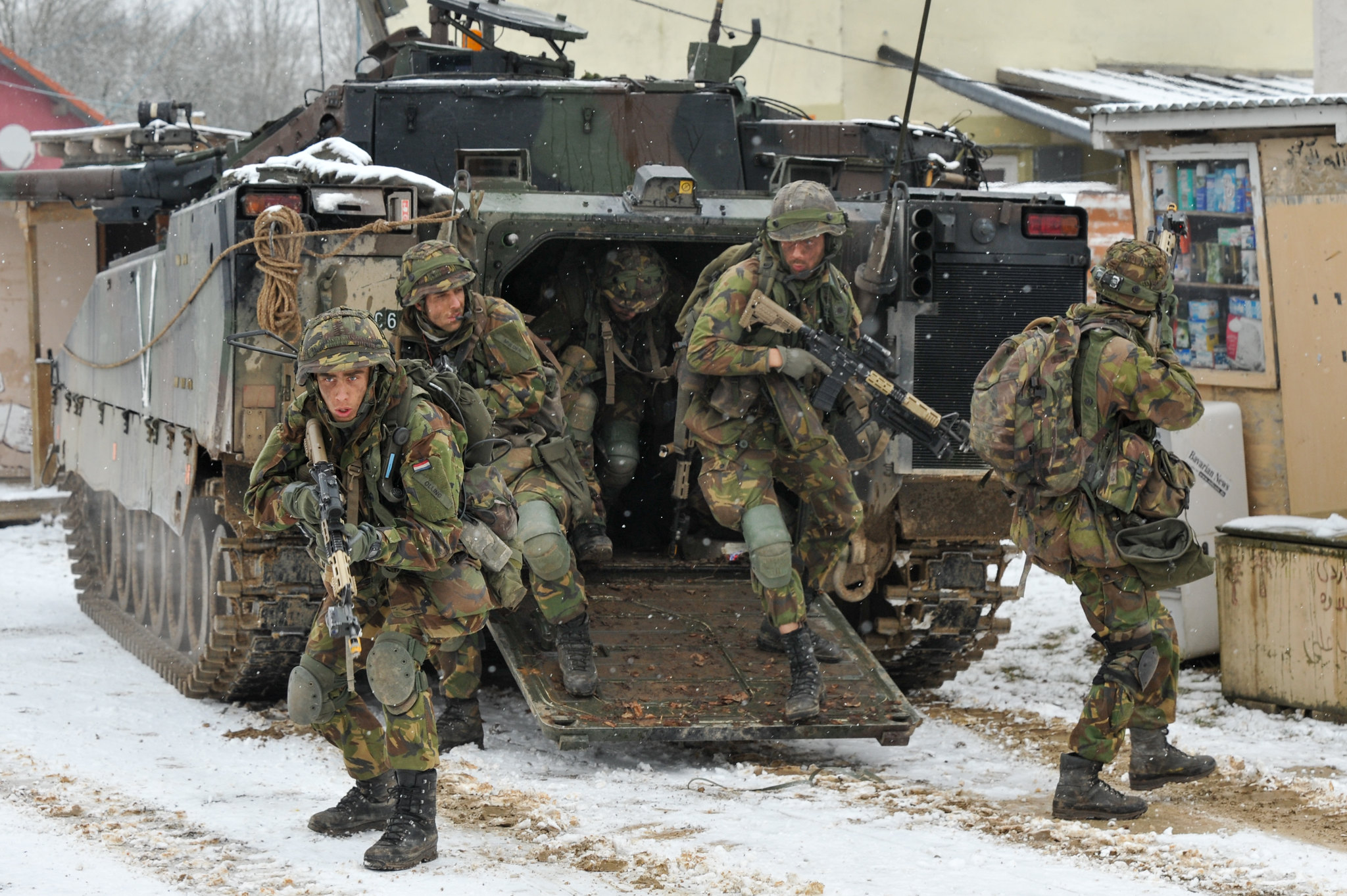
Willing to fight, or not?
The willingness to fight for one’s country reflects a multifaceted reality. For instance, military recruiters, facing the challenge of enlisting sufficient personnel for armies, may see it as an indicator of potential success in recruitment efforts.3
By contrast, academics have interpreted a general decline in this readiness to fight over the last decades as a shift towards post-heroic societies and as the micro-underpinning leading to the Long Peace – the absence of war between major powers since the end of World War II.4 Subsequent research has, however, nuanced this view, demonstrating that factors such as patriotism5 or ongoing territorial disputes6 actually increase this willingness. Conversely, the wealthiest citizens in unequal societies are comparatively less willing to fight.7
Data from the WVS/EVS provided a new angle on this topic. The findings revealed a moderation in the previously described downward trend: although the average willingness to fight remains lower than in the 1980s, it has not continued to decrease since the mid-2000s. In fact, in some countries it has actually increased again. In the Netherlands (see figure 1), the willingness to fight peaked in 1990 and then sharply declined over the following fifteen years. However, since 2006, there has been a gradual increase, albeit marginal thus far.
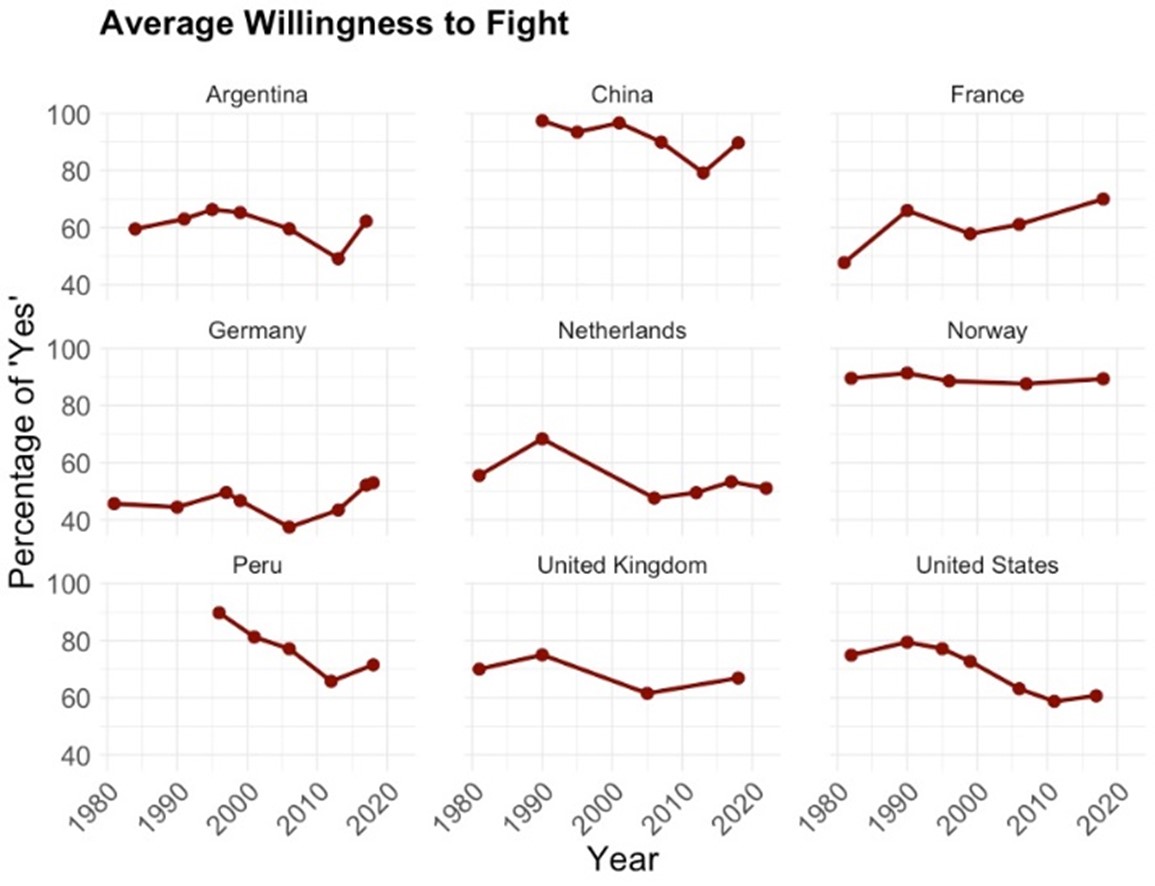
Building on insights from political psychology and the evidence presented here, a pattern emerges wherein pivotal events – extraordinary incidents of considerable magnitude, such as wars – fundamentally change how people think about foreign policy.8 People's views on foreign and defence policies tend to coalesce around a few key issues, including the perceived legitimacy of military intervention.9
In essence, regions marked by conflict may lead citizens to perceive the global order as inherently hostile, while regions of peace suggest a world where conflict is an anomaly, thereby influencing perceptions of the legitimacy of military force and, consequently, citizens’ stated readiness to engage in combat. As the intensity of regional war increases, so does the expressed willingness to fight.10
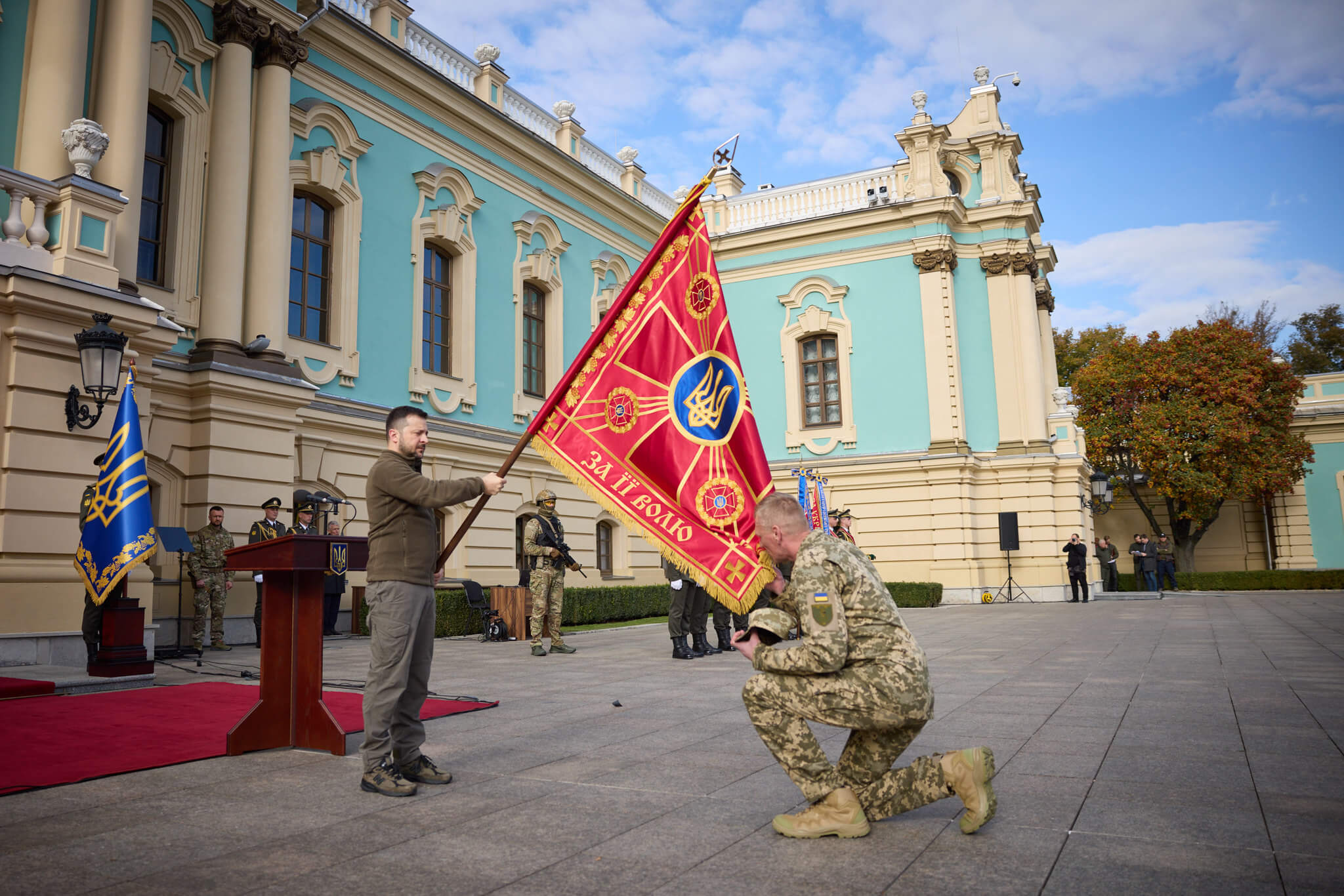
Looking at the trends
Figure 1 illustrates the fluctuations in citizens’ willingness to fight across nine countries from around the world.11
As mentioned before, there has been a decline in the average global willingness to fight since the 1980s, albeit with a recent slowdown. Since the mid-2000s, there has been a renewed increase.
It is important to note that while not all countries shown in the figure adhere to this trend, most nations within the WVS/EVS dataset do. For example, in the Netherlands, where survey data from 1981 to 2022 are available, the initial willingness to fight was notably high. In 1990, affirmative responses stood at 69 per cent but fell to 48 per cent by 2006. Since then, there has been a modest recovery, with the percentage slightly surpassing 50 in the 2017 and 2022 surveys.
A more pronounced trend can be seen in Germany, where the percentage of citizens affirming their readiness to fight for their country has been historically lower than in the Netherlands but has caught up to other Western nations in recent years. In 1990, 46 per cent of Germans stated they would be prepared to defend their country; a stark contrast to the 69 per cent in the Netherlands and 79 per cent in the United States at the time. This figure declined further to just 34 per cent by 2006. However, a reversal of this trend is evident, with the percentage climbing to 53 in 2018. While recent figures do not substantially exceed those of the 1980s, they now more closely align with the willingness observed in Germany's allied and peer nations. The current 53 per cent affirmative response in Germany slightly surpasses the Netherlands’ 52 per cent and is approaching the 60 per cent observed in the US during this period.
Contrary to our expectations, an outright moral objection to violence was rare
Compared to the rest of the world, the willingness to fight in the Netherlands, Germany and the US appears relatively moderate. For instance, China, which has been participating since 1990, experienced a decrease from an initial 97 per cent to a still remarkable 79 per cent in 2013, followed by a resurgence to 90 per cent in 2018.
However, caution is, advised when interpreting such data from more autocratic nations like China, where the resurgence of professed readiness might reflect a heightened reluctance to express dissenting views due to political pressures rather than genuine sentiment. Indeed, the trend observed in China corresponds with the broader political climate, aligning with the loosening of political control in the early to mid-2000s, followed by a tightening of repression against dissent after Xi Jinping's rise to power. This potential bias is acknowledged in the analysis.
Nonetheless, some highly democratic societies, notably the Nordic countries – including Finland, Sweden, Denmark and Norway – also report high levels of willingness to fight. As depicted in the graph, Norwegians have shown a consistent commitment to defend their country since 1981. One potential explanation is that these countries have largely maintained compulsory military service. Indeed, our comprehensive data analysis reveals a positive correlation between conscription and citizens’ willingness to fight. This observation aligns with findings from previous studies.12
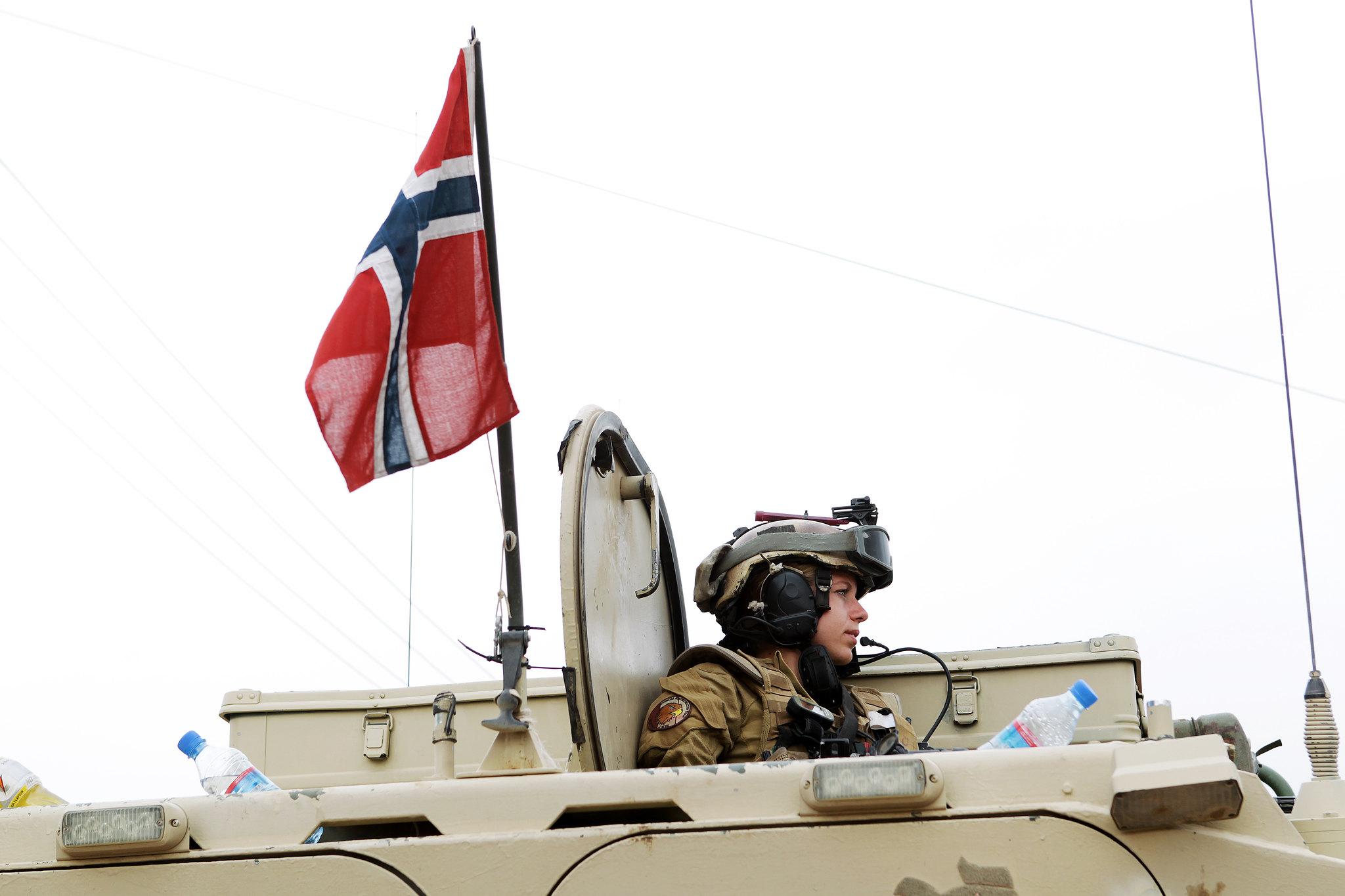
What does it mean to fight for your country?
To enhance our understanding of how people think about the willingness to fight for their country, focus group sessions were organised with university students in Amsterdam and Rotterdam. These discussions enabled a deeper exploration of potential understandings of the question and contextualisation of the findings – even though groups of students are of course not representative of society more broadly.13
Morality was a predominant concern among the participants. As suspected, the students were only prepared to defend their country in the event of an attack on it. They also seemed to be motivated by a commitment to fundamental values such as democracy, freedom and an open society, rather than their nationality. However, contrary to our expectations, an outright moral objection to violence was rare, with only a few students expressing pacifist beliefs.
Gender perspectives played a significant role as well. Female participants exhibited more hesitancy towards engaging in military conflict. Yet, this – again – did not seem to be driven by an outright rejection of violence but by specific concerns related to their role as a woman, including the risk of sexual violence and the physical demands of combat positions. Indeed, many women expressed a willingness to contribute to national defence through alternative roles, such as intelligence or support services, although there was no consensus on whether such roles were encapsulated by the survey question.
These results align with previous research, which consistently indicates that women are less likely to express willingness to fight. For instance, when examining existing descriptive data from the Netherlands, this gap becomes quite obvious (see figure 2). However, the insights gained from the focus groups have provided a better understanding of the reasons behind this phenomenon.

Age is another demographic factor that influences citizens’ willingness to fight, as identified by numerous studies. The correlation between increasing age and a diminishing willingness to defend one’s country could stem from the fact that older citizens may doubt their ability to contribute meaningfully to national defence. This mirrors the gender-related trends discussed earlier.
In the Dutch context, the overall decline in willingness across age groups halts around 2012 (illustrated in figure 3). After this period, there is a noticeable uptick in the willingness to fight within the oldest demographic (60+), to the extent that by 2022, they exhibit one of the highest levels of affirmative responses in comparison to all other age groups. This pattern points to the possibility that, in the specific case of the Netherlands, the observed differences may not merely reflect age-related decline but also generational shifts in attitudes. This might be the result of previous conscription policies, which may have exerted a lasting influence on older generations in the Netherlands.
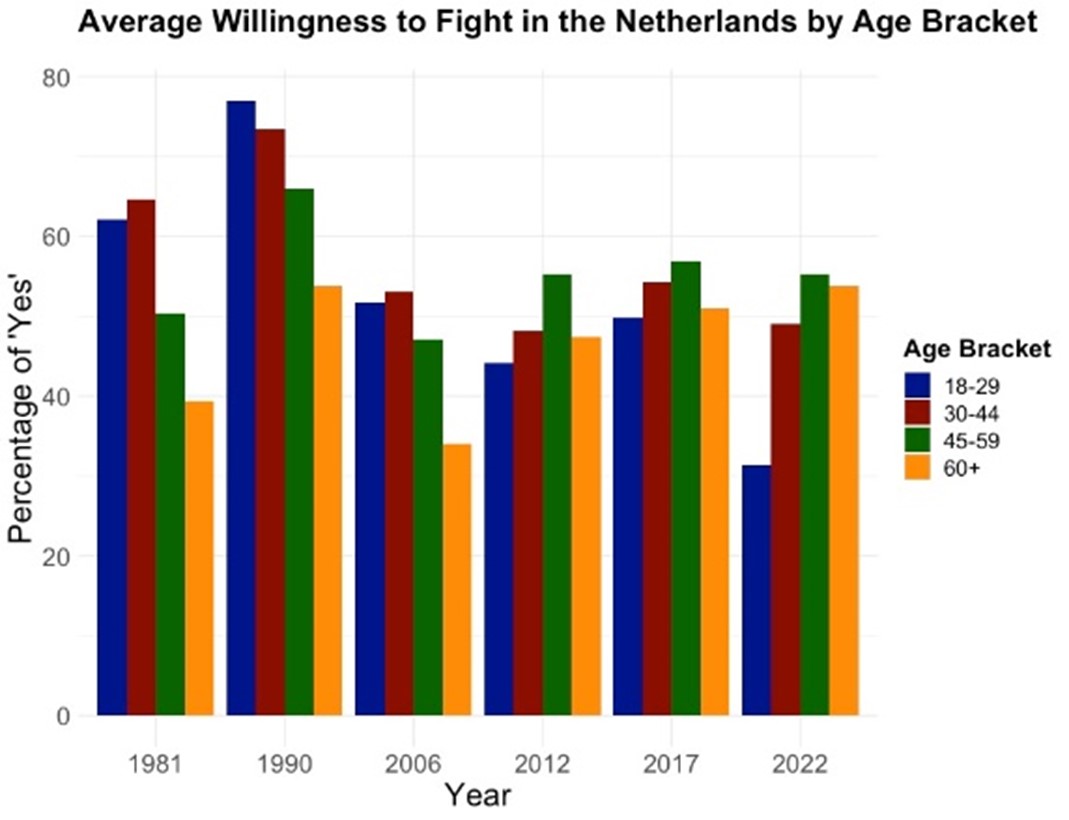
Combat readiness and strategic communication
In sum, it can be concluded that increased hostilities within a country’s region prompt individuals to perceive the presence of conflict as a fundamental aspect of the international landscape and to legitimise their own involvement in combat. At the same time, the student respondents seem to be strongly motivated by moral considerations when answering the question on whether someone is willing to fight. This willingness is highest when countries face an aggressor. Women show a slightly lower willingness to fight for their country; this is motivated by a careful consideration of gender-specific risks in potential conflicts and their ability to contribute effectively to military efforts.
It becomes a crucial responsibility of authorities to explain the complexities of conflict
The outcomes of this study contribute to the ongoing research landscape by reaffirming several established findings, including the importance of gender, compulsory military service and age. Nonetheless, this research also introduces a previously overlooked factor: the extent of conflict history in a country’s vicinity. Crucially, this research provides valuable insights for policymakers. The findings suggest that true pacifism is hard to find, which is an important note in a world where conflicts are becoming more ubiquitous.
While responding to a survey question (or participating in a focus group) is not the same as actually picking up a weapon, the used methods reveal divergent public perspectives on combat readiness. The findings also underscore the importance of careful strategic communication, as public attitudes towards conflict can fluctuate depending on perceptions of its origin. Thus, it becomes a crucial responsibility of authorities to explain the complexities of conflict. Communication can indeed make wonders.
- 1Edward A. Shils, and Morris Janowitz, ‘Cohesion and Disintegration in the Wehrmacht in World War II’, The Public Opinion Quarterly 12, no. 2, 1948, pp. 280-315.
- 2This research was supported by the Small Projects for NWA routes 2020 (project number: NWA.1418.20.021) within the Dutch Research Agenda (NWA), financed by the Dutch Research Council (NWO).
- 3Ian Thomas, 'The U.S. Army Is Struggling to Find the Recruits Its Needs to Win the Fight over the Future', CNBC, 26 October 2022; Nick Squires, ‘Italian Army Struggles to Find Enough Recruits as Cosseted Millennials Find Military Life Too Tough’, The Telegraph, 16 May 2019; 'Military Conscription under Consideration in the Netherlands: Report', NL Times, 8 April 2022; Mario Kubina, ‘Nachwuchs-Problem Der Bundeswehr: Elf Prozent Weniger Bewerber', BR24, 23 May 2023; Brian McAllister Linn, 'A Historical Perspective on Today’s Recruiting Crisis', The US Army War College Quarterly: Parameters 53, no. 3, 28 July 2023.
- 4Inglehart, Puranen and Welzel, 'Declining Willingness to Fight for One’s Country: The Individual-Level Basis of the Long Peace', Journal of Peace Research 52, no. 4, 2015, pp. 418-34.
- 5A. Burcu Bayram, 'Nationalist Cosmopolitanism: The Psychology of Cosmopolitanism, National Identity, and Going to War for the Country', Nations and Nationalism 25, no. 3, July 2019, pp. 757-781.
- 6Nam Kyu Kim, 'Territorial Disputes and Individual Willingness to Fight', Journal of Peace Research 57, no. 3, May 2020, pp. 406-421.
- 7Christopher J. Anderson, Anna Getmansky and Sivan Hirsch-Hoefler, 'Burden Sharing: Income, Inequality and Willingness to Fight', British Journal of Political Science 50, no. 1, January 2020, pp. 363-379.
- 8See for example: Robert Y. Shapiro and Benjamin I. Page, 'Foreign Policy and the Rational Public', The Journal of Conflict Resolution 32, no. 2, 1988, p. 32; Robert S. Erikson, Michael B. Mackuen and James A. Stimson, The Macro Polity, 1st ed. Cambridge: Cambridge University Press, 2001; John W. Kingdon, Agendas, Alternatives, and Public Policies, 2nd ed, New York: Longman Classics in Political Science, 2003.
- 9Matthias Mader and Harald Schoen, 'No Zeitenwende (yet): Early Assessment of German Public Opinion Toward Foreign and Defense Policy After Russia’s Invasion of Ukraine', Politische Vierteljahresschrift, 2023, 64, no. 3, pp. 525-547.
- 10We find evidence for our hypothesis in an elaborate quantitative data analysis (currently under review).
- 11Due to space constraints, we cannot show patterns from all countries in the dataset, so we chose countries which are either allies of the Netherlands or represent the diversity of the dataset.
- 12See for example: Anderson, Getmansky and Hirsch-Hoefler, 'Burden Sharing: Income, Inequality and Willingness to Fight'; Jakobsen and Jakobsen, 'Tripwires and Free-Riders: Do Forward-Deployed U.S. Troops Reduce the Willingness of Host-Country Citizens to Fight for Their Country?'
- 13In total, the groups were attended by about thirty students, and were diverse in terms of gender and national backgrounds.












0 Reacties
Reactie toevoegen